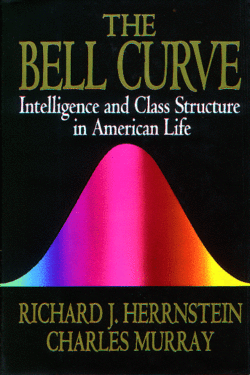Can Blacks excel in America? The simple answer lies in a 1994 study!
I recently received an email linking to a 2014 oped published on American Renaissance titled “Ten Percent is Not Enough.” The oped states:
The black/white experiment has failed.
[ … ]
Some argue it’s a problem of “culture,” as if culture creates people’s behavior instead of the other way around. Others blame “white privilege.” But since 1965, when the elites opened America’s doors to the Third World, immigrants from Asia and India–people who are not white, not rich, and not “connected”–have quietly succeeded. While the children of these people are winning spelling bees and getting top scores on the SAT, black “youths” are committing half the country’s violent crime–crime, which includes viciously punching random white people on the street for the thrill of it, that has nothing to do with poverty.
The experiment has failed. Not because of culture, or white privilege, or racism. The fundamental problem is that white people and black people are different. They differ intellectually and temperamentally. These differences result in permanent social incompatibility.
Is there a “permanent social incompatibility” between blacks and other ethnicities? Are blacks different intellectually and temperamentally?
 The answer can be found in a study done in 1994. Richard J. Herrnstein and Charles Murray in their seminal book on cognitive ability The Bell Curve: Intelligence and Class Structure in American Life state,
The answer can be found in a study done in 1994. Richard J. Herrnstein and Charles Murray in their seminal book on cognitive ability The Bell Curve: Intelligence and Class Structure in American Life state,
“The question is how to redistribute in ways that increase the chances for people at the bottom of society to take control of their lives, to be engaged meaningfully in their communities, and to find valued places for themselves.”
Herrnstein and Murray found,
Ethnic differences in higher education, occupations, and wages are strikingly diminished after controlling for IQ. Often they vanish. In this sense, America has equalized these central indicators of social success.
Herrnstein and Murray asked,
“What are the odds that a black or Latino with an IQ of 103 – the average IQ of all high school graduates – completed high school? The answer is that a youngster from either minority group had a higher probability of graduating from high school than a white, if all of them had IQs of 103: The odds were 93 percent and 91 percent for blacks and Latinos respectively, compared to 89 percent for whites.
Herrnstein and Murray concluded:
- We have tried to point out that a small segment of the population accounts for such a large proportion of those [social] problems. To the extent that the [social] problems of this small segment are susceptible to social-engineering solutions at all, should be highly targeted.
- The vast majority of Americans can run their own lives just fine, and [public] policy should above all be constructed so that it permits them to do so.
- Much of the policy toward the disadvantaged starts from the premise that interventions can make up for genetic or environmental disadvantages, and that premise is overly optimistic.
- Cognitive ability, so desperately denied for so long, can best be handled – can only be handled – by a return to individualism.
- Cognitive partitioning will continue. It cannot be stopped, because the forces driving it cannot be stopped.
- Americans can choose to preserve a society in which every citizen has access to the central satisfactions of life. Its people can, through an interweaving of choice and responsibility, create valued places for themselves in their worlds.
Herrnstein and Murray found,
Inequality of endowments, including intelligence, is a reality.
[ … ]
Trying to pretend that inequality does not really exist has led to disaster. Trying to eradicate inequality with artificially manufactured outcomes has led to disaster. It is time for America once again to try living with inequality, as life is lived: understanding that each human being has strengths and weaknesses, qualities to admire and qualities we do not admire, competencies and in-competencies, assets and debits; that the success of each human life is not measured externally but internally; that of all the rewards we can confer on each other, the most precious is a place as a valued fellow citizen.
Finally, Herrnstein and Murray wrote,
“Of all the uncomfortable topics we have explored, a pair of the most uncomfortable ones are that a society with a higher mean IQ is also likely to be a society with fewer social ills and brighter economic prospects, and that the most effective way to raise the IQ of a society is for smarter women to have higher birth rates than duller women.“
Shocking words in 1994 and indeed even more so today. Is it time to have a national public debate on cognitive abilities?
The key factor in setting goals is IQ. Is it time to reintroduce IQ testing for all students?
RELATED VIDEO: Demographic Bomb: Demography is Destiny



Trackbacks & Pingbacks
[…] Can Blacks excel in America? The simple answer lies in a 1994 study! […]
Leave a Reply
Want to join the discussion?Feel free to contribute!